Matador Network's Blog, page 826
July 6, 2020
TeamLab’s annual art exhibition

This year has been a tough one for museums and art, but that’s certainly not stopping teamLab from opening its annual surreal digital art exhibit in Japan.

Photo: teamLab
TeamLab will hold its sixth annual outdoor art exhibit in Mifuneyama Rakuen. The park will be filled with 22 artworks meant to blur the lines between art and nature and transport guests to a fantasy world far away from the current grim reality.

Photo: teamLab
The exhibition, titled “A Forest where Gods Live,” will transform the large garden into a colorful space that’s constantly changing with each exhibit and visitor. The park, created in 1845, blends almost seamlessly into a labyrinthine forest that is home to sacred trees, carved Buddha figures, and shrines, making the experience of walking and getting lost through the exhibit even more solemn.
TeamLab’s project does not use any material, only light, and proves that nature can be turned into art without damaging it in any way.

Photo: teamLab
Digital art exhibits are having a moment. TeamLab’s digital art museum in Tokyo has been a resounding success in the past few years and others have followed in its footsteps. France has just opened the largest digital art center in the world in a former World War II submarine base after a 2019 Van Gogh digital exhibition took Paris by storm.
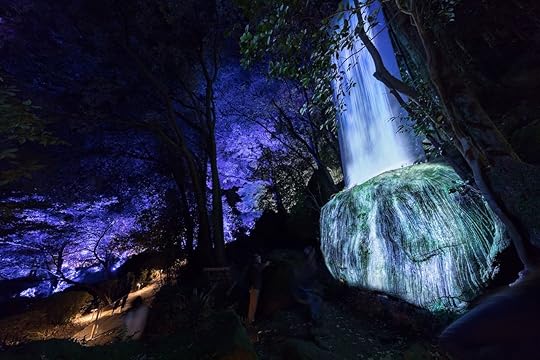
Photo: teamLab
The exhibit in Mifuneyama Rakuen will be open from summer to fall, though exact dates haven’t been specified. Adult admission is $11 per person. 
More like thisNewsWWII submarine base transformed into the world’s largest digital art center now open
The post This outdoor art exhibit in Japan blends art and nature to transport you into a dream world appeared first on Matador Network.

The oldest restaurants in the world

It’s hard to keep a restaurant open even in the best of times. The year 2020, to put it mildly, is not the best of times — especially for those who work in the restaurant business. By some expert estimates, only one in four restaurants in the United States will reopen after the COVID-19 pandemic, regardless of how many plexiglass booth shields are erected between tables.
Yet there are some restaurants around the world that have survived past pandemics, world wars, civil wars, authoritarian regimes, economic depressions, and, in some cases, all of the above.
NetCredit, a financial services provider, dug through media reports, records, and claims to find the oldest restaurant in more than 115 countries on every continent except Antarctica. The oldest of the old have been around longer than you probably realize restaurants existed.
There’s always some disagreement about what qualifies as the “oldest” whenever these lists circle around. One publication may have one standard because a restaurant’s original name and business is the same, while another discounts the same restaurant because it switched buildings in the 1600s. Yet another may not even consider the business because it’s technically a “tavern” and not a restaurant. But finding the most long-lived establishments on the planet has been a favorite internet pastime for pretty much as long as the internet has existed — there’s even a blog dedicated solely to researching the oldest of everything.
NetCredit’s team went with the relatively broad qualification of the oldest restaurants “still serving today.” They started with basic searches and then combed through trustworthy sources and travel sites, and called a few business owners to double check when necessary. This worked for most of the 190-plus countries in the world. To prove their veracity, they even documented their sources and put the research online for people to see for themselves.
From an overall perspective, these are the 10 oldest restaurants in the world, according to NetCredit’s research:
Gostilna Gastuž in Slovenia, 1467. Famous for mushroom soup with buckwheat porridge.
Honke Owariya in Japan, 1465. Famous for soba made with mushrooms, egg, shrimp tempura, nori, leeks, daikon, and other ingredients.
Hotel Gasthof Löwen in Liechtenstein, 1380. Famous for veal with rösti and vegetables.
The Sheep Heid Inn in Scotland, 1360. Famous for its steak with roasted mushroom.
La Couronne in France, 1345. Famous for duck, roasts, and escargot.
The Brazen Head in Ireland, 1198. Famous for classic bangers and mash.
Ma Yu Ching’s Bucket Chicken House in China, 1153. Famous for buckets of chicken.
The Old House in Wales, 1147. Famous for individual pies with chips and peas.
Wurstkuchl in Germany, 1146. Famous for sausages and sauerkraut.
St. Peter Stifts Kulinarium in Austria, 803. Famous for tafelspitz.

North America

Photo: NetCredit
Europe

Photo: NetCredit
Middle East and Central Asia

Photo: NetCredit
South America

Photo: NetCredit
Africa
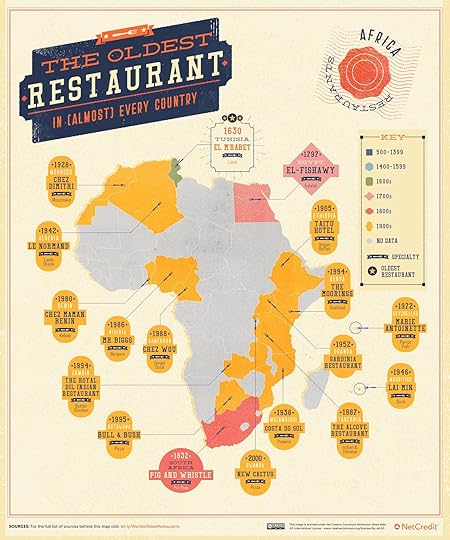
Photo: NetCredit
Asia and Oceania

Photo: NetCredit
More like thisArt + ArchitectureThe oldest building in 100 major cities in the US
The post The oldest restaurants in the world, mapped appeared first on Matador Network.

Barbados plans a 12-month stamp
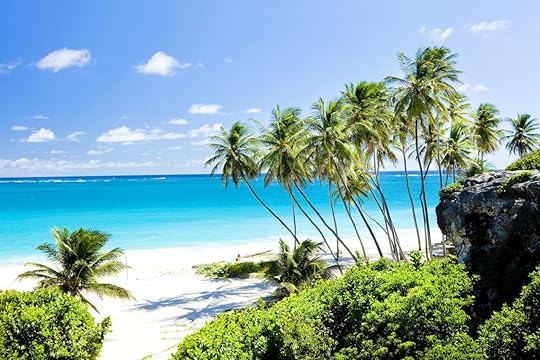
The COVID-19 pandemic has turned a lot of people into remote workers and someone has noticed that many of them may want to escape the confines of their homes and make the most of their newly found freedom. According to Barbados Today, Barbados is looking to introduce a “Welcome Stamp” designed to encourage remote workers to visit, work, and stay on the island on a long-term basis.
The stamp would reportedly allow people to remain on the island for up to a year. According to Prime Minister Mia Amor Mottley, “We came up with a concept and it is being refined now as ‘12-Month Barbados Welcome Stamp.’ This will allow people from the United States, Europe and Latin America to come and do their jobs digitally for a couple of months and then go back home, if they feel they can work better in a more relaxed atmosphere such as next to a beach.”
The Welcome Stamp program is also designed to bring in tourism dollars to local businesses and boost the economy. This is particularly important in the COVID-19 era, when tourism and the economy have been dealt a serious blow. 
More like thisTravelThese destinations are opening to US tourists this summer
The post Barbados could soon allow remote workers to stay and work on the island for one year appeared first on Matador Network.

Global Entry center at LAX open
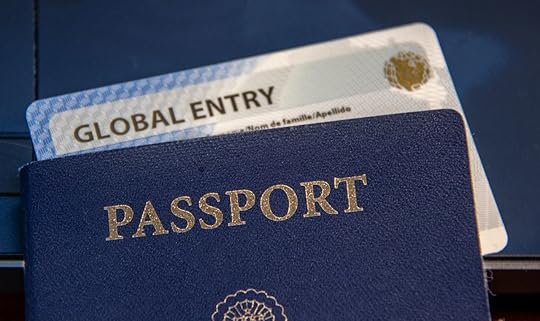
Eagerness to speed through airport security lines and customs might be at an all-time high right now, as demand for travel is picking up, but flyers also want to remain safe.
For the conditionally approved Global Entry applicants eagerly awaiting their interview to complete their enrollment into the program, there’s some good news. After all Trusted Traveler Program Enrollment Centers closed in March because of the COVID-19 pandemic, the US Custom and Border Protection agency has announced that one is reopening on July 6 — the Global Entry Enrollment Center (GEEC) at LAX.
Global Entry members are granted expedited security clearance upon entering the United States from abroad. Once in the program, instead of joining the main customs declaration line, travelers head to a designated kiosk to make any declarations and pass through passport control upon arriving from an international flight. Global Entry also includes TSA PreCheck, a program that allows you to join a typically shorter line during the pre-boarding security process.
When LAX’S GEEC reopens, social distancing protocols will be in place, such as staggered appointments, reduced waiting area seating, plastic barriers at service counters, and a face mask requirement for employees and visitors.
On March 19, all enrollment centers were shut down, and in-person interviews for Global Entry, SENTRI, NEXUS, and FAST were suspended. If you’re a Global Entry member, or the member of another Trusted Traveler Program, an 18-month grace period has been put in place, so you can keep using your membership even after it expires, but you need to apply for renewal before the expiration date.
Luckily for TSA PreCheck hopefuls, those in-person interviews have been operating without interruption across the country. 
More like thisTechnology + GearWhen Global Entry and TSA PreCheck are worth it, and which to choose
The post LAX’s Global Entry Enrollment Center is reopening today appeared first on Matador Network.

July 2, 2020
The Climate Win
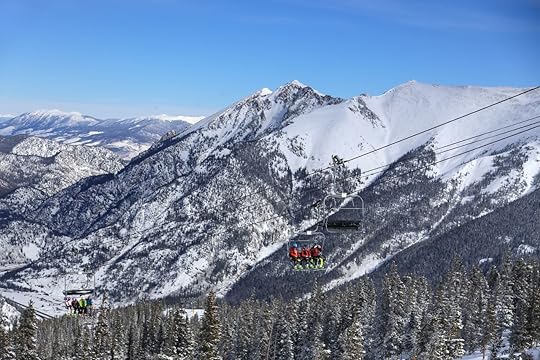
This week’s Climate Win dives into the often elusive practice of cross-sector unity. Public, private, and non-profit sectors seem very distant in both goals and action when it comes to climate initiatives. But signs are emerging that this is changing, largely due to increased demand from the public.
The Environment and Energy Study Institute released poll data in April of this year showing massive bipartisan support for renewable energy development, even if participants on opposite sides of the political spectrum supported renewable development for different reasons. However independently, the public, private, and non-profit sectors are beginning to move in the same direction, with 2050 as the “Punto de Reunion.”
Democrats in the US House of Representatives released a massive climate plan on Tuesday that calls for net-zero emissions across the entire country by 2050. “Net-zero” doesn’t actually mean the country wouldn’t produce any carbon emissions — it means that any it does produce would be offset through initiatives like tree planting and carbon capture technology. Still, the plan is incredibly ambitious as it would bring the country in line with a major goal of the 2015 Paris Agreement, which President Donald Trump has pledged to withdraw the United States from.
Though it’s unlikely to become law with Trump in office, the plan has strong bipartisan legs to stand on for further negotiation. Mainly, it doesn’t outright mandate the end of fossil fuel power. The plan also calls for auto producers to produce only electric vehicles by 2035 and for electric utilities to be entirely renewable by 2040, allowing time for companies and utilities to grow existing sustainability plans that could hopefully create and/or save a high number of jobs. Conservative lobby group Citizens for Responsible Energy Solutions released a statement supporting many of the plan’s initiatives, though the group was frustrated that Republicans weren’t more involved in the process of putting it together.
“The national goal for net-zero emissions by 2050 is laudable and consistent with many of the voluntary targets set by companies large and small across the United States, and with our recommendations to the Select Committee,” the statement said. “We particularly applaud those proposals that reflect America’s core values of innovation, accountability, and opportunity.”
On the private industry side, one of the country’s largest resort operators announced a major step forward in its move toward more sustainable operations. Vail Resorts announced on July 1 that a new wind energy facility has come online in Nebraska thanks to its investment and commitment to purchase 310,000 kilowatt-hours of wind power annually. That’s enough to power 90 percent of the operations at its 34 North American resorts, including its largest ski areas, Colorado’s Vail and British Columbia’s Whistler Blackcomb.
The ski industry is emerging as a leader in the private sector’s push towards renewable energy, a move championed by Aspen Snowmass and outdoors industry advocacy groups like Protect Our Winters. Montana’s Big Sky Resort began purchasing renewable energy credits to power its 38 lifts back in March, and Jackson Hole has run on wind power since last September.
Planning a ski trip for next winter? Do your part by following these steps to reduce its footprint.
More climate wins
The environmentally focused Green party scored massive wins in French elections last Sunday, according to Reuters. The party will now be a part of or in control of an alliance government in at least 11 cities across the country, driven by increased public demand for cleaner air and less traffic. (Though the country still took offense to this Dutch bike commercial.)
Ford announced Wednesday that it would become carbon neutral by 2050, another move towards the mid-century meeting point we discussed above. They are the first US automaker to make such a bold claim. “We can develop and make great vehicles, sustain and grow a strong business and protect our planet at the same time – in fact, those ideals complement each other,” said Bob Holycross, vice president, chief sustainability, environment and safety officer, in the announcement.
A few weeks ago, this column focused on Environmental Justice, the concept that disadvantaged communities are often adversely affected by climate change, waste management, and other environmental factors. New York took a step to address the issue this week, pledging $10.6 million in grants to install clean power and solar storage systems in low-income communities, according to a report from Grist. 
More like thisNewsUS Senate passes biggest conservation bill in decades
The post Ambitious 2050 goals could help the US see massive environmental progress appeared first on Matador Network.

Review of ‘Breathtaking: K2' film

K2 is known as the “savage mountain.” At 28,251 feet, this Karakoram peak is the world’s second tallest, behind only Mt. Everest, but it is the world’s toughest mountain to climb. The new film Breathtaking: K2 – The World’s Most Dangerous Mountain stars renowned Eddie Bauer alpine climbing guides Adrian Ballinger and Carla Perez, along with photographer Esteban “Topo” Mena, in their attempt to summit the world’s second-highest mountain without supplemental oxygen.
The journey follows the pair through sickness and setbacks, including extreme weather and last-minute negotiations with striking sherpas, putting into vivid detail why K2 is the most dangerous mountain. With fewer people knowing about K2 versus Mount Everest, there’s a lot to learn from this film, particularly for the summit-curious and anyone planning an expedition outside their comfort zone. Here are nine of the most interesting things we took away from the film.
1. More people have been to outer space than have stood on the top of K2.
Fewer than 400 people have reached the summit. Achille Compagnoni and Lino Lacedelli were the first, standing on the peak on July 31, 1954. The expedition featured in Breathtaking: K2 had its own first: Perez became the first woman to summit both K2 and Everest in the same year, and the first from the Americas to summit K2 without supplemental oxygen. Ballinger became the fourth American to do so.
2. Only 14 mountain peaks stand taller than 8,000 meters.
All 14 lie in the Himalaya and Karakoram ranges of Asia, in what is known in the mountaineering world as the “death zone.” These imposing mountain ranges not only form international borders, but they also stand as a nearly impenetrable force of natural power that dwarfs the mountains of every other continent. At 28,251 feat, K2 towers above Denali (20,308’), Aconcagua (22,841’), Mount Elbrus (18,510’), Kilimanjaro (19,341’), and Mount Wilhelm (14,793’), the highest peaks in North America, South America, Europe, Africa, and Oceania, respectively.
3. One person has died attempting to climb K2 for every four who reach the summit and live to tell the tale
K2 has the second-highest fatality rate of all 8,000-meter peaks, behind only Annapurna. Eighty-six people have died attempting to summit the mountain. A fateful expedition in 2008 took the lives of 11 climbers in a single day. Nearly all expeditions to the summit happen in spring or summer — as the winter high is around -15 degrees Fahrenheit and both wind and snow conditions can be extremely dangerous.

Photo: Eddie Bauer
4. Months-long climbing expeditions can be derailed in minutes, often just shy of the summit.
Conditions near the summit aren’t known until they’re reached, and only then can a final decision be made — in the climbing film Meru, for example, mountaineers Conrad Anker and Jimmy Chin pull the plug on their first summit attempt of the 21,850-foot Meru peak with the goal in sight, having to return years later to finally reach the summit. Breathtaking highlights a successful expedition that almost wasn’t. As both Ballinger and Perez battled stomach illness, the weather above them roared to the point that nearly all other expeditions touring during that time turned back. By waiting an extra night before the final summit push, Ballinger and Perez saved the fate of their mission.
5. Your success is based as much on your crew as yourself.
A climbing crew is only as strong as its weakest member. Professional mountaineers like Ballinger and Perez vet potential climbing partners thoroughly before ever inviting them on a serious expedition like K2. While attempting to negotiate with a crew of sherpas to carry their gear, the team learns that the sherpas have gone on strike due to poor treatment by the previous group they worked with. It took a long negotiation — the promise of an excellent tip at the end of the trip — to convince the crew to change their minds. If the sherpas had said no, the mission wouldn’t have been able to proceed.
The same is true of Ballinger and Perez. If the stomach illness that plagued either had progressed to a point where one couldn’t continue, the other would have been forced to pull the plug on the mission.
Even when thought up by only one or two people, monumental feats like this are a team effort. When trust is the most valuable commodity one can offer, each person’s life is in the hands of their teammates.

Photo: Eddie Bauer
6. Determination in mountaineering parallels determination in life.
The crew had planned to rest for a week at base camp to prepare. But Mother Nature had other plans. A disturbing weather report from their meteorologists showed only a four-day window to reach the summit and return, or else they’d have come all this way for nothing.
“I’ve told myself that failure’s okay, and that we all fail and we all keep taking these small steps towards success,” Ballinger says as the crew weighs whether or not to pull the plug due to weather, after already making base camp. “Hopefully it comes, and even when it doesn’t, the experiences are really, really powerful.”
The group pulled it together, with Ballinger resting an extra day at base camp before pushing to Camp 3. They spent five hours under a massive overhang, crossed dangerous seracs on the glacier, and passed through a high-risk avalanche field in what would ultimately be a successful push to the summit.
7. The most important factor in mountaineering is being able to listen to the mountain.
As Ballinger says in the film, mountaineers must “go until the mountain tells me I can’t go anymore.” Ask any experienced mountaineer and they’re sure to agree — you can plan a climbing expedition to the “T,” but the mountain has the final say on whether or not a summit push is successful. This K2 expedition was more fortunate. Exasperated and nearly out of breath near the top, Ballinger exclaims, “Sure enough, it’s been wind-hammered, lots of ice showing now, it’s got plenty of exposure to ice falls. But it’s feeling pretty darn OK.”
8. It’s all worth it at the top.
The Tibetan prayer flags fluttered in the wind as Ballinger, Perez, and the crew approached the summit. The feeling of accomplishment is visible on the faces of the entire crew as they stand atop K2. Ballinger is near tears. They had overcome seracs, avalanche danger, sickness, and extreme weather.
“Trying not to cry,” he says. “I can’t believe it. We’re on the summit of the second tallest mountain in the world. 8,611 meters. K2! Unbelievable. Ninety-five percent of people went home, and now we’re on top alone on this perfect summit day.”
9. The journey isn’t over at the summit.
The crew celebrates their successful summit push at the top, basking in near-breathless revelry. Ballinger notes, however, that they still have to get down before the real celebration can begin back at basecamp. And while the most dangerous part had been conquered, the crew still had to maintain focus and not let their guard down until safely reaching base camp. 
More like thisHikingHow to summit a mountain that doesn’t have a trail
The post This epic new film ‘Breathtaking’ follows climbers on the world’s most dangerous mountain: K2 appeared first on Matador Network.

Swedish COVID-19 response probe

As countries around the world went into lockdown to flatten the COVID-19 curve back in March, Sweden took a more relaxed approach: Citizens were asked to stay home and avoid others who might be high-risk, while schools, businesses, and gatherings were largely unaffected.
Sweden now has almost 10 times as many COVID-19 cases as neighboring Norway. In addition to more than 70,000 cases, over 5,000 Swedes who tested positive for COVID-19 have died, roughly 20 times Norway’s 250 fatalities. At a press conference this week, Prime Minister Stefan Lofven acknowledged the failings of his government’s no-lockdown approach.
“We have thousands of dead,” he said on Wednesday, adding, “Now is the question of how Sweden should change, not if.” According to Business Insider, Prime Minister Lofven has also launched an investigation into the country’s COVID-19 response strategy.
Chief Swedish epidemiologist, Anders Tegnell, was behind the approach. The idea was to protect Sweden’s vulnerable population while herd immunizing Swedes at large. This, Tegnell argued, would better position the country in the event of a second wave.
Instead, Sweden’s approach revealed “shortcomings” that Prime Minister Lofven is eager to better understand. Among the problems with the Tegnell’s initial reasoning is that herd immunity would require some 60 percent of Swedes to develop antibodies to protect against future infections. As of May, that figure is only at 7.3 percent in Stockholm. Other issues resulted from Sweden’s equally relaxed attitude toward testing.
Prime Minister Loften will begin his probe by looking into why roughly half of Sweden’s COVID-19 deaths occurred in nursing homes, disproportionately hurting the vulnerable elderly population that the Swedish government issued its early measures with the intent to protect. 
More like thisWellnessWith bars open and kids in school, Sweden stands alone in its COVID-19 approach
The post Swedish prime minister orders inquiry of anti-lockdown response to COVID-19 appeared first on Matador Network.

Japanese N700S bullet train

Japan’s bullet trains were some of the finest examples of rail technology in the world even before they were built to withstand earthquakes.
Operational since July 1, the newest bullet train connecting Tokyo and Osaka on the Tokaido Shinkansen line of the Central Japan Railway was designed with both safety and comfort in mind. The N700S, for “Supreme,” has an all-new self-propulsion system that allows the train to run on battery for a limited time in the event of an earthquake or other emergency. The new brakes are faster than ever. The lighter, quieter suspension system helps absorb motion, which promises a smoother ride. And riders can recline their seats farther back than ever.
The N700S is also the fastest bullet train to date. It can reach speeds of up to 360 kilometers per mile, reports CNN, though it will only run up to 285 kilometers per hour with passengers on board. It’s the first new model in over a decade for the Tokaido Shinkansen line, which was established in 1964 just before Tokyo hosted the Summer Olympics. The N700S was similarly meant to start running in time for the 2020 Summer Olympics, and the launch went ahead as scheduled after the Olympics were postponed until 2021.
Bullet trains were already impressive without the mood lighting, energy-saving 16-car configuration, and ample power outlets the N700S is introducing. But even by bullet train standards, this new earthquake-safe model is pretty cool.
If you have the opportunity to give it a whirl while traveling between Tokyo and Osaka, try not to get too distracted by the unbelievably smooth transit. You’re gonna wanna take a minute to appreciate just how far rail travel has come. 
More like thisFood + DrinkThe bullet train is one of the best places to try regional Japanese cuisine
The post Japan’s newest bullet train is sleek, earthquake-safe, and the fastest yet appeared first on Matador Network.

Mona Lisa private viewings

The Louvre is finally opening again after temporarily closing due to the coronavirus pandemic back in March. On July 6, France’s most famous museum will reopen with new social distancing measures in place, including reserving specific time slots for viewing exhibitions, and mask-wearing. While this might be inconvenient for many visitors, who are used to just being able to show up and stroll the museum at their leisure, it could actually prove useful for exhibits that are typically overcrowded.
When it comes to the Mona Lisa, for example — the museum’s most popular attraction — only two visitors at a time will be allowed in the room with the painting. This gives each individual sufficient time to truly enjoy the piece, in a near-private setting, without the distraction of other picture-taking tourists. Visitors will be able to spend 10-15 minutes in the room, guided by orange circles on the floor that indicate social distancing areas. And once you exit the gallery, you won’t be allowed back in.

Photo: Musée du Louvre/Facebook
When the museum reopens on July 6, about 70 percent of it will be accessible to the public, including popular galleries like the Ancient Egypt, Greek, and Roman antiquities, and Italian, Spanish, and English painting halls. 
More like thisMuseumsHow to crush the Louvre in one day
The post When the Louvre reopens, visitors will get private audiences with the Mona Lisa appeared first on Matador Network.

United adds flights for August 2020

As demand for travel picks up again, United Airlines is adding nearly 25,000 flights to its schedule for August.
Most of these additions will come in the form of domestic flights as United prepares to add over 600 daily flights to more than 200 airports across the United States, resume 50 suspended routes, and double the number of flights from its New York/Newark hub. By August, the airline will be operating 48 percent of its 2019 domestic schedule.
In a press release, Ankit Gupta, United’s vice president of Domestic Network Planning said, “Demand is coming back slowly and we’re building in enough capacity to stay ahead of the number of people traveling. And we’re adding in flights to places we know customers want to travel to, like outdoor recreation destinations where social distancing is easier but doing so in a way that’s flexible and allows us to adjust should that demand change.”
Those domestic outdoorsy destinations include Aspen, Colorado; Bangor, Maine; Bozeman, Montana; and Jackson Hole, Wyoming.
United is also resuming some of its international flights in August and adding more where needed, with a focus on vacation markets like Tahiti, Hawaii, the Caribbean, and Mexico. The airline will offer more flights to Europe, even though the union has barred American travelers from its borders. Flights from Chicago to Frankfurt and Brussels; from Newark to Brussels, Munich, and Zurich; and from San Francisco to London, will be resuming.
For more information on the resumption of United’s domestic and international flight routes, check out the July 1, 2020 press release. 
More like thisTravelThese destinations are opening to US tourists this summer
The post United to add 25,000 flights to its August schedule appeared first on Matador Network.

Matador Network's Blog
- Matador Network's profile
- 6 followers



